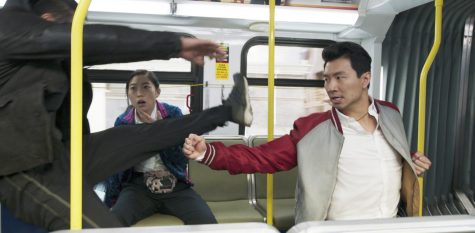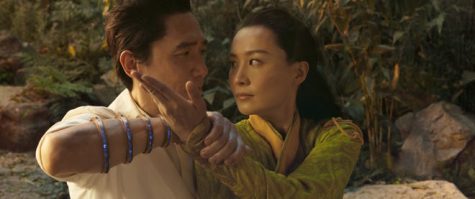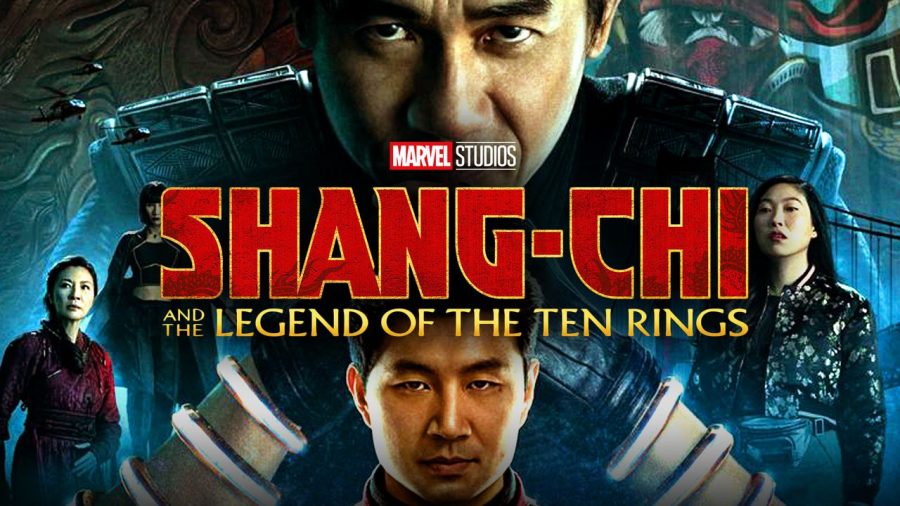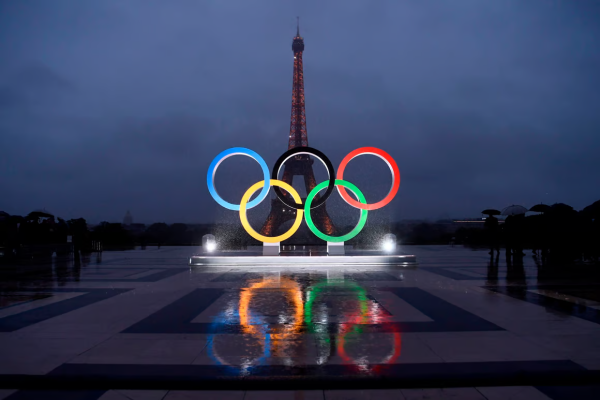Shang-Chi: Legends That Last Longer than Family
Something’s driving this story to places it couldn’t go, and Katy’s not the one in gear.
Making over $300 million worldwide since it premiered, “Shang-Chi and the Legend of the Ten Rings” lives up to the hype filling up the theater seats.
Topping the box-office for weeks, “Shang-Chi” was one of the newest addition to the Marvel Cinematic Universe. The story follows Shang-chi (Simu Liu), the protagonist, who is the son of a power-hungry and living legend, Xu Wenwu (Tony Leung). He’s got big shoes to fill, and that parental expectation becomes a pressure onto him as the movie progresses.

What’s great about “Shang-Chi,” is that, unlike most MCU movies, context is not necessarily needed to understand and enjoy a majority of the story. The debut focuses more on the growth of the characters rather than their role in the Marvel Universe.
Though like an MCU movie, it brims with action. Protagonist Shang-chi (Liu) learned actual kung-fu to keep it realistic. While there may be situations that are hardly possible, the magic isn’t ruined. Throwing the audience to the edge of their seats with their piece, the action and emotion of the scenes are well-executed, especially with the meeting scene between Wenwu (Leung) and Ying Li (Fala Chen). The protagonist started his training in 2019 to really bring the movie to life. One of the most memorable fight displays was one that was inside an actual bus, which crashed into real cars, as shown in the trailer. The dedication towards creating realism is extremely impressive and prominent throughout the movie.

Except, for the village of Ta-Lo, which is the setting for at least a fourth of the movie, which pushes out of the established realm of normal.
At the beginning of the movie, it starts out in New York City, then transitions into Macau, China. Both of these are real cities, but when it transitions into the village of Ta-Lo, it’s overwhelmingly different. The change is so different that it came to a point where one of the climaxes felt unrealistic. Ta-Lo, as depicted in the comics, is another dimension of the universe with celestial dragons, phoenix-like fenghuang, the hoofed qilin beasts, and the canine-like haetae. The village of Ta-Lo started to lose its magic with its constant CGI animals, background, and fighting. What stood on the boundary of magic and it is ‘too far’ was the house of the Ten Rings. It was extravagant, but still had hints of realism, unlike the spectacle of Ta-Lo, which was exotic, confusing, and in sharp contrast to the actual cities used in the movie.
Other things that fell flat are the characters’ personal plot development. The movie only brushes on the growth of his sister, Xu Xianling (Meng’er Zhang) other than seconds-long scenes of her, or even Shang-chi’s best friend, Katy (Awkwafina) as an Asian living in America and her own pressure to find her own identity. This would’ve been a good way to reach out to their Asian American audience who relate to this as they were waiting for the movie’s release. Katy’s storyline went from being a great character to another cliche background person after the climax, which leaves viewers feeling disappointed after her witty commentary and important insight in the movie. She helped drive certain parts of the story, Xianling (Zhang) and even the father would have driven the story more with their own growth.
But, what doesn’t fall flat is the Asian representation. “Shang-chi” is the first Marvel movie with an Asian protagonist on the screen. Unlike the live-action movie of Mulan where most of the crew behind the scenes weren’t Asian, many behind the scenes of “Shang-chi” were of Asian descent, such as screenwriters and even the director, Destin Daniel Cretton. What’s also important in putting representation, in the original comics, Shang-chi’s dad was a racist Asian caricature, which the movie had changed and also had poked fun at it. The progress of movies using Asian characters to play certain stereotypical roles, to now having the first main superhero movie on the screen makes change towards a more progressive representation.

Having Asian representation beyond the screen fights the challenge hidden behind the theater screens. Especially in MCU, a predominantly white-dominated universe, having both realistic and accurate representation sets a precedent for major films. It’s important to young kids, but adults as well.
As the movie continues to grow in popularity, it deserves its spot as one of the most successful movies ever since the beginning of the pandemic.The film also sets up the perfect scene for Marvel’s “Eternals” coming out on November 5th, 2021.

Often times you'll find me posting on the Instagram @thegrizzlygrowlersv!
Fun fact: I designed the logo you're seeing on the top of the screen!





